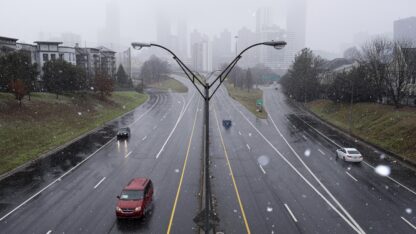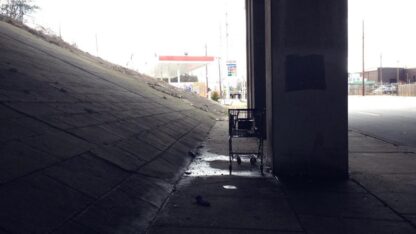The Atlanta Streetcar is offering other cities a lesson – in what not to do.
Like us on Facebook
In the District of Columbia, the executive director of the District Department of Transportation said he will keep the streetcar free for the next four years.
That’s because he said he saw what happened in Atlanta, when ridership plunged after Atlanta’s streetcar started charging $1.
Georgia State University public management and policy professor Joseph Hacker said he thinks of sticky black molasses when he thinks of the Atlanta streetcar.
“I’m sorry, that sounds terrible, but I mean, I can walk to those places faster than the streetcar,” Hacker said. “I don’t know how they justified getting the money for it.”
Hacker teaches transportation planning and said his own students, who are supposed to be among the target demographic, tell him they don’t ride it.
Ridership Plunge
Atlanta started its $1 streetcar fee in 2016.
Compared to the first three months of 2015, ridership dropped by nearly half in the first three months of 2016 after the fare was implemented.
Hacker had his students ride the streetcar every semester for field projects. He said he and his students have found the Atlanta streetcar needs two things to succeed and justify the $1 fare: greater connectivity to better destinations and more density.
D.C. Streetcar
Terry Owens is the public information officer at DDOT, which operates the District’s streetcar. He said DDOT decided it will wait four years until its streetcar is more useful to residents and connects to two train stops.
“We’re trying to build ridership, so rather than implement a system that would be obsolete the day we brought it online, we thought we’d continue to build out the system to provide greater connectivity, and then revisit the fare policy question,” Owens said.
Portland Streetcar
Dan Bower is executive director of the city of Portland’s streetcar, one of the most successful systems in the country.
He said the city charged passengers from the outset because it offered something practical.
He said it was built for residents, not primarily tourists, and transported them where they wanted to go: from their neighborhoods to major employment centers and schools.
“You would want to charge a fare from the outset,” Bower said. “For us, it’s not really about trying to trick people into riding the streetcar because it’s free. We’re relying on the fact that we built a system that functions and works for people and there’s a cost for that.”
Portland’s system has expanded six times since it launched in 2001 and is now 16 miles long. The fare doubled from $1 to $2 recently. Bower said ridership has only grown since.
Atlanta Streetcar Expansion
A city of Atlanta spokesperson said ridership is in line with the city of Atlanta’s expectations and projects it will increase with greater use of its mobile payment app.
The city’s deputy chief operating officer said the mobile app is expected to help generate more revenue as well. He said nearly half of Atlanta Streetcar riders don’t pay the $1 fare.
In a statement, a city of Atlanta spokesperson said since “the TIGER grant award for the Streetcar was announced, more than $1.5 billion in new economic activity has occurred within a five minute walk of the route.”
“The Streetcar is a long-term investment in Atlanta’s downtown neighborhoods and economic development, and is a first step in building out a citywide network of transit options. As the Streetcar network expands to reach more neighborhoods and destinations, we expect greater numbers of people to take advantage of this new transportation option.”
The city of Atlanta has said it plans to extend the Atlanta Streetcar to the Atlanta BeltLine, but that’s contingent on funding.

9(MDAxODM0MDY4MDEyMTY4NDA3MzI3YjkzMw004))









